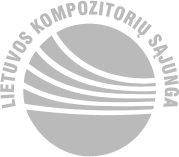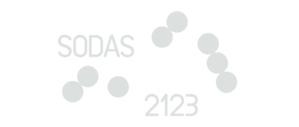The four distinct parts, personalities and voices who meet for the sake of performance to contribute their lines to a concert space. Neither of them is aware of the final result, and neither of their musical voices would exist without a neighbour.
Along the lines of the performance, the listener will hear violin, flute, cello, oboe, silence, probability, chance and a variety of sounds beyond the instruments involved. A yet another contributing factor will surely be the immediate neighbour of the musicians, the audience. The show will include a piece by John Cage as well as works by Arturas Bumšteinas and Serhii Vilka written for this festival.
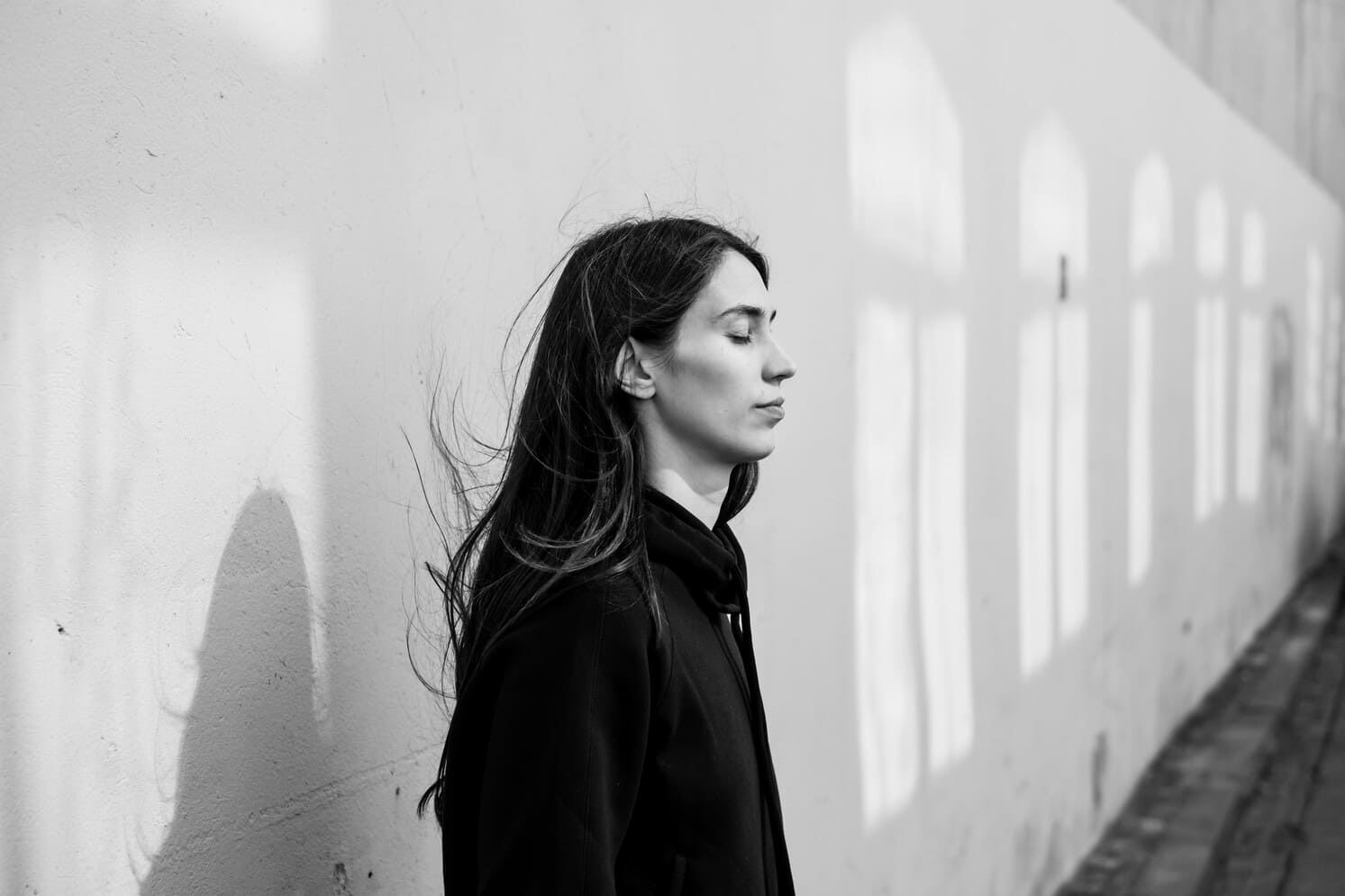
Lora Kmieliauskaitė is a violinist and an active participant of diverse artistic events, including different areas of music, theatre and film. Her performance experience spans several genres, including classical, experimental and contemporary music. She is a PhD student in Contemporary Music at the Lithuanian Academy of Music and Theatre. Her performances often include fusions of different media, movement, theatre and new technologies. Lora is a member of the Twenty Fingers Duo, a contemporary music ensemble.
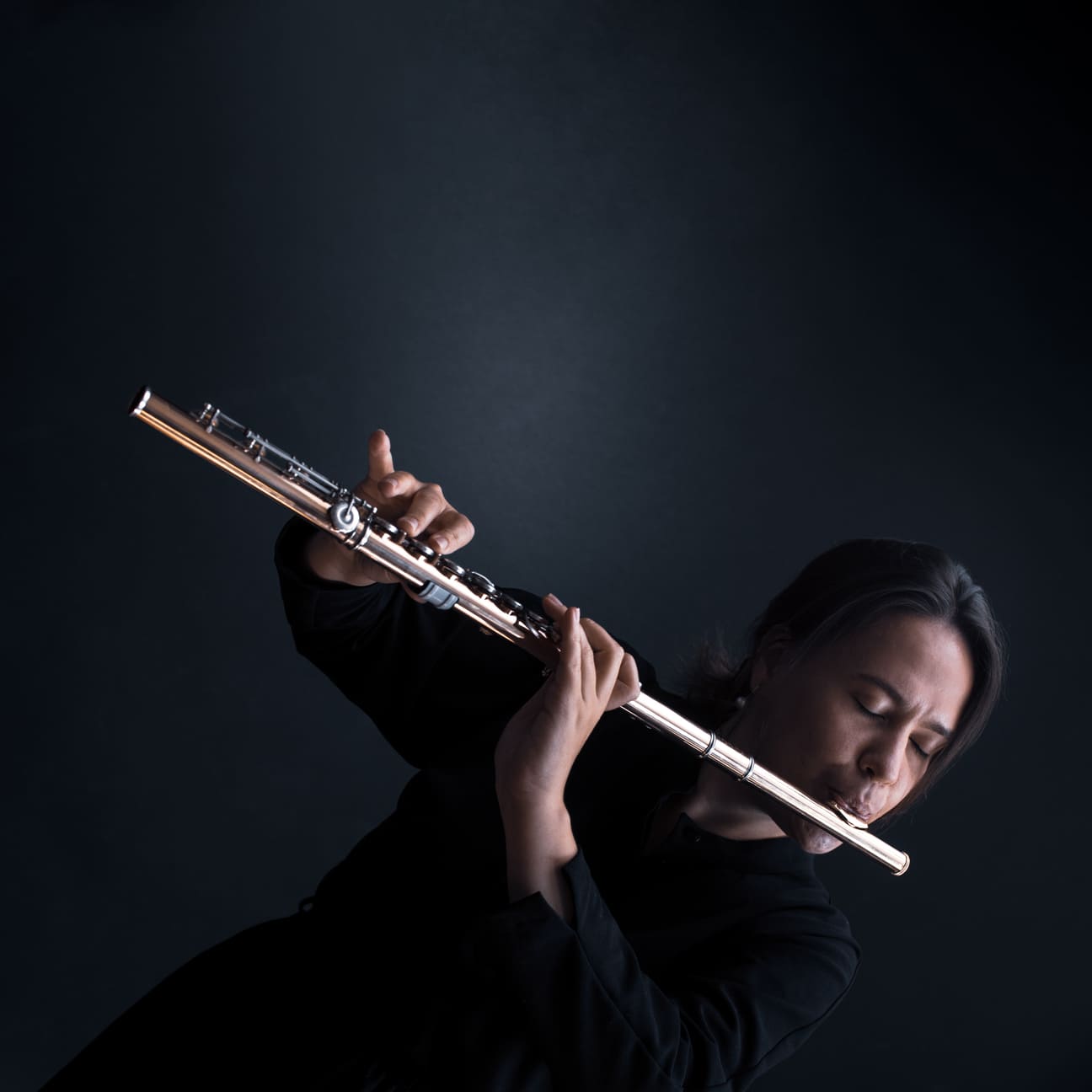
Born and brought up in Italy, Livia Schweizer now lives and works in Helsinki as a freelance musician. She is known for her interest in Baroque flute, improvisation and non-conventional music notation as a tool of bringing together creative souls from different backgrounds and cultures. Her other passion is transforming different art objects into music.
Currently a member of the European Composer Improvisers Orchestra, she is also part of the Helsinki-based Septad Ensemble focused on the concept of composing music on the spot. In addition to that, she is a co-founder of the Earth Ears Ensemble mostly dedicated to performing new music written by lesser-known composers.
Her previous performance experience includes joint projects with the NYKY Ensemble, Korvat Auki, the Finnish society for the promotion of contemporary music, and several orchestras, such as the Jyväskylä Sinfonia, the Pori Sinfonietta, the Turku Philharmonic and the Lahti Symphony. She took part in the Old Mine Residency in the northern part of Karelia, travelled to perform at the Villa Karo cultural centre in Benin, and played in the Invisible Travelers Project involving real-time music and drawing.
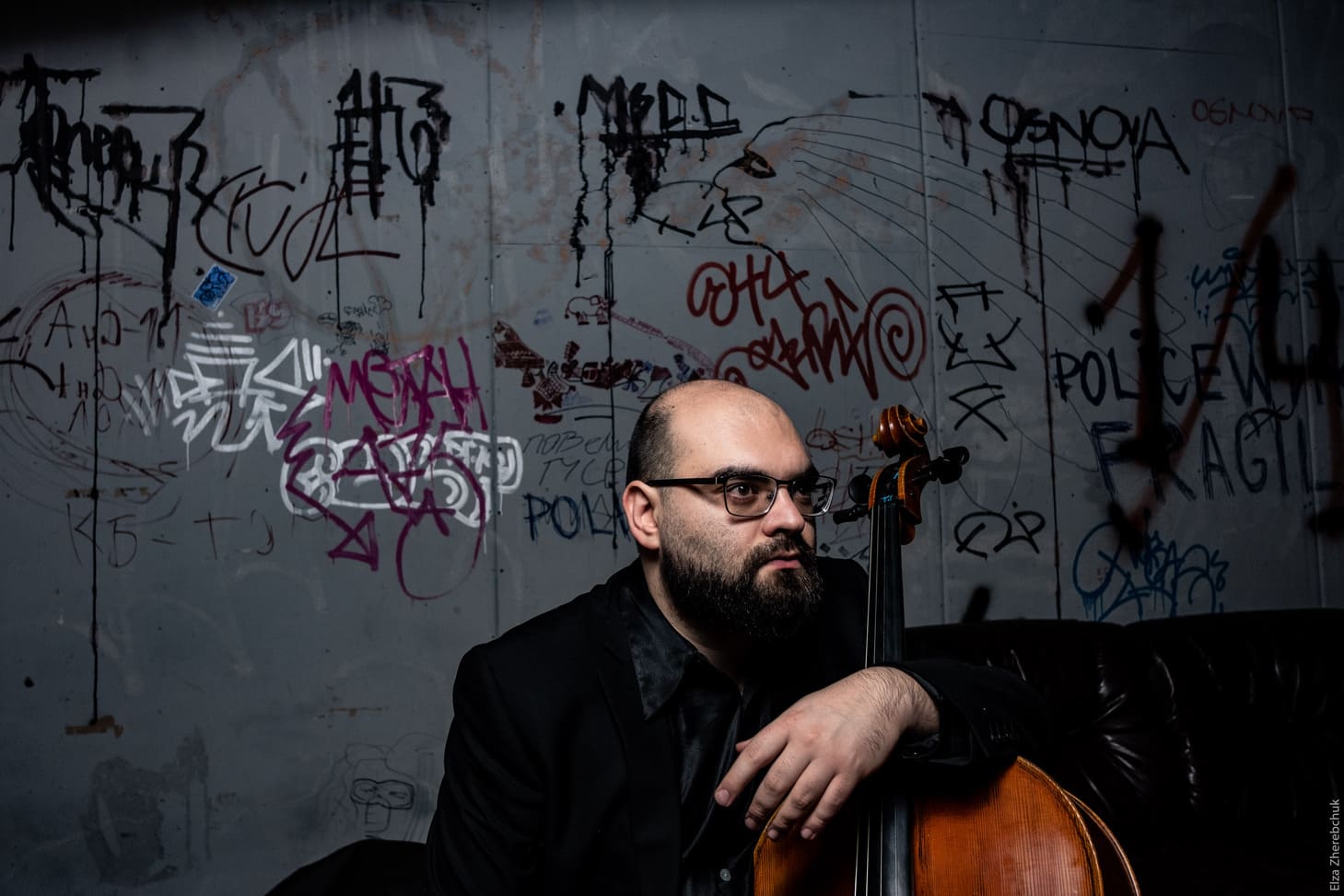
Currently the cellist of the Vilnius String Quartet, Viktor Rekalo is a versatile musician who has played plenty of diverse music, including early, chamber, contemporary and jazz, and has always been a vibrant part of the Ukrainian musical scene, particularly in Kharkiv and Kyiv.
Known as a keen participant of various artistic initiatives, he has taken part in a number of international festivals, such as Contrasts, and Alfa Jazz Fest in Lviv, Ukraine, the Contemporary Art Forum in Lublin, Poland, the Musical Spring in Poznan, Poland, and the Musikprotokoll in Graz, Austria.
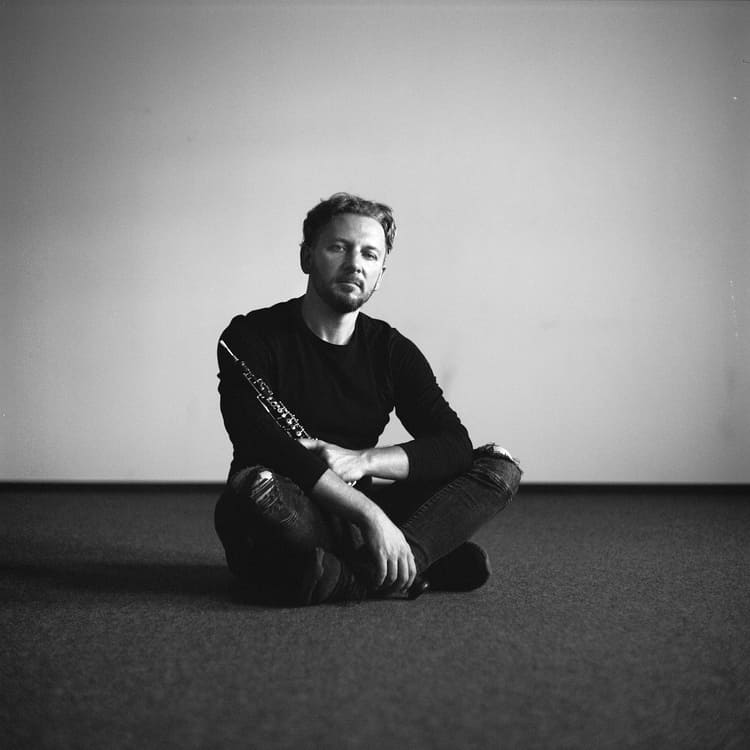
The composer, oboist, sound artist and improvisator, Maxim Kolomiiets had his pieces performed by some of the world’s leading ensembles and musicians including the Ensemble MusikFabrik, the Arditti Quartett, the Haydn Orchester, the Amaryllis Quartett, the Neo Quartet as well as Ian Pace and Hayk Melikyan. As an oboist, he took part in historically informed and contemporary performances together with the Freiburg Baroque Orchestra and the Ensemble Recherché and at several international festivals dedicated to new music, including these in Darmstadt and Graz.
In collaboration with the Ukho Ensemble, he played the Ukraine premiere of the Concert for oboe No. 2 by Luca Francesconi and ensemble pieces by Pierre Boulez, Stefano Gervasoni, Brian Ferneyhough, Luciano Berio and György Kurtág. He is a co-founder of the KoRa cube-shaped art space, one of Kyiv’s most exciting underground spaces for improvisation, artistic experiments and collaboration.
A deeply personal reunion of two musicians during which they might reflect on the concepts of space, distance, city, human ties, and the singularity of intention – all this within an ever-changing process of improvisation on the backdrop of still snapshots of structures that are not around them anymore. Or will it turn into a conversation involving two monologues that complement one another? Their previous performances were marked by a touch of awe, contemplation and power of wordless self-expression, always within intimate settings for the two musicians playing, it might seem, for each other. The show will be based on improvised music performed by Maxim and Viktor. One of them likens this to two Don Quixotes meeting and trying to fight the dragons along the rhythmical noise of an evacuation train, while the other – well, we will see.
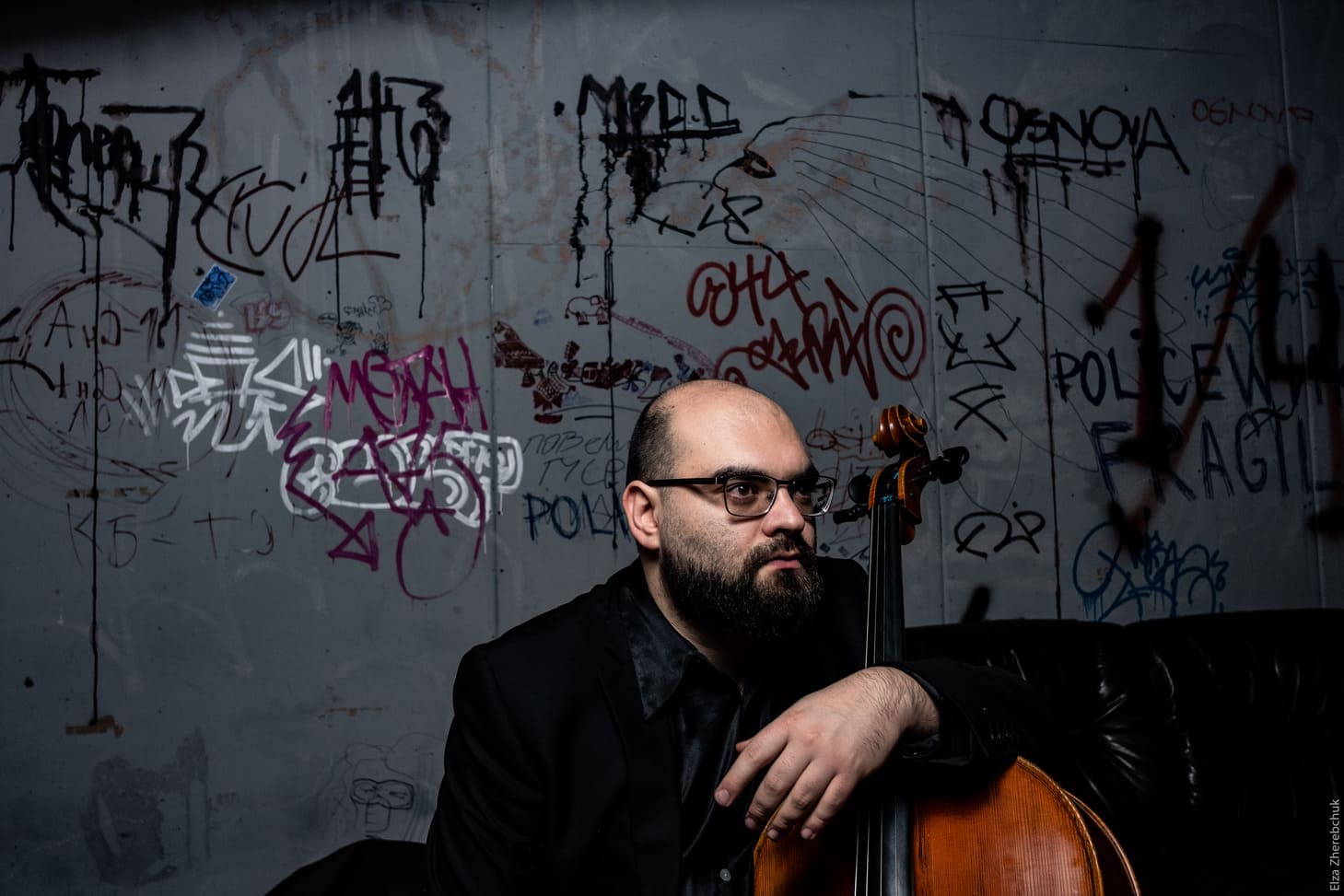
Currently the cellist of the Vilnius String Quartet, Viktor Rekalo is a versatile musician who has played plenty of diverse music, including early, chamber, contemporary and jazz, and has always been a vibrant part of the Ukrainian musical scene, particularly in Kharkiv and Kyiv.
Known as a keen participant of various artistic initiatives, he has taken part in a number of international festivals, such as Contrasts, and Alfa Jazz Fest in Lviv, Ukraine, the Contemporary Art Forum in Lublin, Poland, the Musical Spring in Poznan, Poland, and the Musikprotokoll in Graz, Austria.

The composer, oboist, sound artist and improvisator, Maxim Kolomiiets had his pieces performed by some of the world’s leading ensembles and musicians including the Ensemble MusikFabrik, the Arditti Quartett, the Haydn Orchester, the Amaryllis Quartett, the Neo Quartet as well as Ian Pace and Hayk Melikyan. As an oboist, he took part in historically informed and contemporary performances together with the Freiburg Baroque Orchestra and the Ensemble Recherché and at several international festivals dedicated to new music, including these in Darmstadt and Graz.
In collaboration with the Ukho Ensemble, he played the Ukraine premiere of the Concert for oboe No. 2 by Luca Francesconi and ensemble pieces by Pierre Boulez, Stefano Gervasoni, Brian Ferneyhough, Luciano Berio and György Kurtág. He is a co-founder of the KoRa cube-shaped art space, one of Kyiv’s most exciting underground spaces for improvisation, artistic experiments and collaboration.
E.manonata is a festival for very young composers – schoolboys and schoolgirls interested in electronic music. The event was launched as part of a larger education project and celebrates its second edition in 2023. The primary goal of the festival is to spur creativity and courage to experiment among teenagers. Pupils from seven Lithuanian towns and cities took part this year. After submitting their draft music, they worked with three professional composers, Jonas Jurkūnas, Jurgis Jarašius and Matas Šablauskis, to develop and improve their pieces alongside the main theme of the Jauna Muzika Festival, BEside. Their endeavour will culminate in a show of spatial music.

Mentors:
As a professional composer, Jonas Jurkūnas often considers jazz music as the foundation for his own aesthetic preferences although he also employs remarkably diverse layers of musical heritage, from academic to pop, in his works. His compositional interests span several genres, including chamber, symphonic and electronic music as well as multimedia and interdisciplinary projects. He teaches classical and jazz orchestration as well as composition of electronic and acoustic music.

Jurgis Jarašius is known as a composer and performer of electronic music. His pieces are often an amalgamation of minimalist rhythms and melodies in conjunction with moderate sound experiments. As a researcher and teacher, he is focused on digital technology in music, recording and spatial sound.
Composer Matas Šablauskis, also known as a recording engineer, often finds inspiration in the interaction of two realms, these of sounds and of images. In composition he mostly uses traditional tools and techniques and sometimes enrich them by adding symbols borrowed from Oriental arts or employing his knowledge of music technology. His work consists of electronic, electroacoustic and audio-visual projects.
In an almost completely regulation-free process of transforming visual texture of graphic scores into a fabric of sound, the duo undertakes a task of changing the paradigm of what a score of every piece of music might be transformed into.They reinvent and reinterpret the horizontal and vertical details of notation to produce a completely new soundscape. This concept offers an unlimited space for elaboration for the two performers, while the audience will have a chance to experience the process from the inside by following the projected sheet music. The performance will consist solely of works notated using graphics as a method of communication between the composer and the performers.

The electroacoustic musician Luis Alejandro Olarte is devoted to live performance and digital lutherie. He teaches Electroacoustic Music at the Sibelius Academy in Helsinki. As a sound artist, he chooses artful expression through the lens of technology. As an individual, artist and citizen, he is constantly reflecting on the impact of the new media in our daily lives.

Born and brought up in Italy, Livia Schweizer now lives and works in Helsinki as a freelance musician. She is known for her interest in Baroque flute, improvisation and non-conventional music notation as a tool of bringing together creative souls from different backgrounds and cultures. Her other passion is transforming different art objects into music.
Currently a member of the European Composer Improvisers Orchestra, she is also part of the Helsinki-based Septad Ensemble focused on the concept of composing music on the spot. In addition to that, she is a co-founder of the Earth Ears Ensemble mostly dedicated to performing new music written by lesser-known composers.
Her previous performance experience includes joint projects with the NYKY Ensemble, Korvat Auki, the Finnish society for the promotion of contemporary music, and several orchestras, such as the Jyväskylä Sinfonia, the Pori Sinfonietta, the Turku Philharmonic and the Lahti Symphony. She took part in the Old Mine Residency in the northern part of Karelia, travelled to perform at the Villa Karo cultural centre in Benin, and played in the Invisible Travelers Project involving real-time music and drawing.
This performance utilizes cassette tapes, analogue electronics and pre-recorded sounds generated by different instruments and objects. The use of cassette tapes allows for further manipulation during a live set. The spontaneous composition includes genre-bending soundscapes and the merger of sonic textures and abstract imagery. A journey through tender melodies, manipulated soundscapes, and distorted points of view awaits the listener – an exploration of unheard possibilities within the realm of experimental sound.

Based in Washington, D.C., Jeff Surak has been a fixture within the experimental community for many years, curating the Sonic Circuits Festival, programming for Rhizome DC arts space, and running his own Zeromoon label. His work manifests non-linear narratives through lo-fi techniques and archaic technology.
Walkmans, broken cables, egg-whisks, double bass, smartphones, effect pedals, copper poles, contact microphones, horror sounds and more, belong to the collection of various sound making tools of the transatlantic experimental music duo Bad Groupy. It focusses on acoustic and digital sound making by combining traditional instruments with diverse objects and archaic technology. The process of unfolding sounds often leads to unexpected but sweet musical delights through shifting the expectations of the listener, as well as of the performers, with demanding musical structures. At this year’s Jauna Muzika Festival, musicians combine free improvisation with programmatic constructs and everyday noises mutating into spherical soundscapes that fill simultaneously the physical performance space and listeners’ headspace with often familiar yet unique sound objects. This performance becomes an experience of collective musical dreaming that embodies the temporary living ecosystem created inside the concert venue.
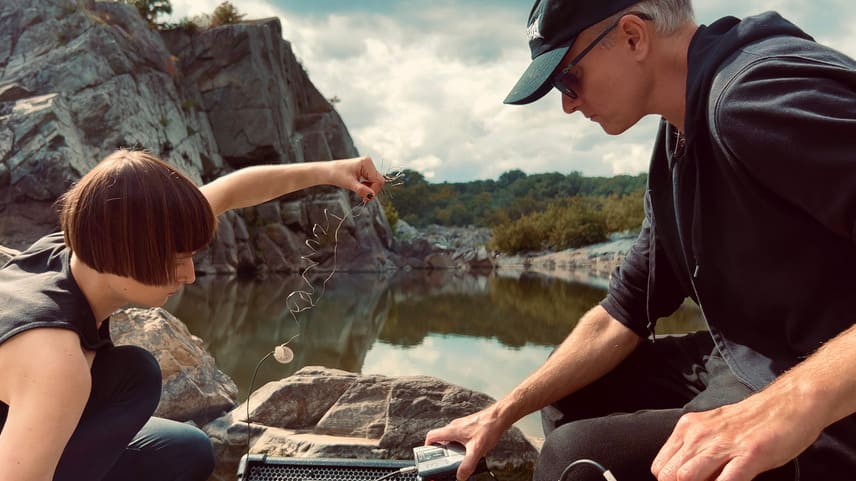
Bad Groupy is an international duo that explores improvisation using double bass, voice, tapes, and electronics. Their debut album, The Last Piece of Graphite, was released in January 2023 and received a positive review in The Sound Projector magazine: “Excellent, hugely enjoyable, not a wasted moment, a great and powerful noise [...]. Bad Groupy might be reckoned as something cathartic, a Joy Division moment [...].” In addition, the Vital Weekly, the oldest online resource for music reviews, characterized it as: “At times loud and very much present, this isn’t the type of music to escape from; or to play as a piece of an ambient backdrop. Full-on listening is required, and it’s rewarded.” The full-on listening combined with pure musical enjoyment characterises also the live performances by Bad Groupy, their musical material ranging from musique concrete to harsh noise.

Based in Washington, D.C., Jeff Surak has been a fixture within the experimental community for many years, curating the Sonic Circuits Festival, programming for Rhizome DC arts space, and running his own Zeromoon label. His work manifests non-linear narratives through lo-fi techniques and archaic technology.
Estonian free improviser Kris Kuldkepp is known as a double bassist, bass guitarist, and performer of electronic music. She is a feminist artist currently completing doctoral studies in Hamburg. As a member of a research group, she explores spatial sound, free improvised music, and posthumanism. An active soloist and ensemble performer, she also is a close collaborator of opera director Lisa Pottstock with whom she develops feminist performances focusing on finding new ways of dealing with body, materiality, and sound. She has given lectures and workshops on interactive audio technology and improvisation. She is a co-curator of Klingt Gut!, the biannual international symposium on sonic art and spatial audio in Hamburg, Germany.
One of them feels comfortable whenever he sets off to reach and cross the limits of what is expected from a classical musician, the new worlds of self-expression awaiting. The other finds new sounds while immersing himself into his own intimate depths. The first one will use endless possibilities of technology to reach the edges of sound. The second will delve into an instrument that, through its limitations, offers a refuge for an private resonance.
They will meet on the stage to link their travel trajectories into something that’s both expansive and immersive, and the listener will see what happens when the stepping outside and the moving inwards is merged while the two are pulling each other in their own direction.
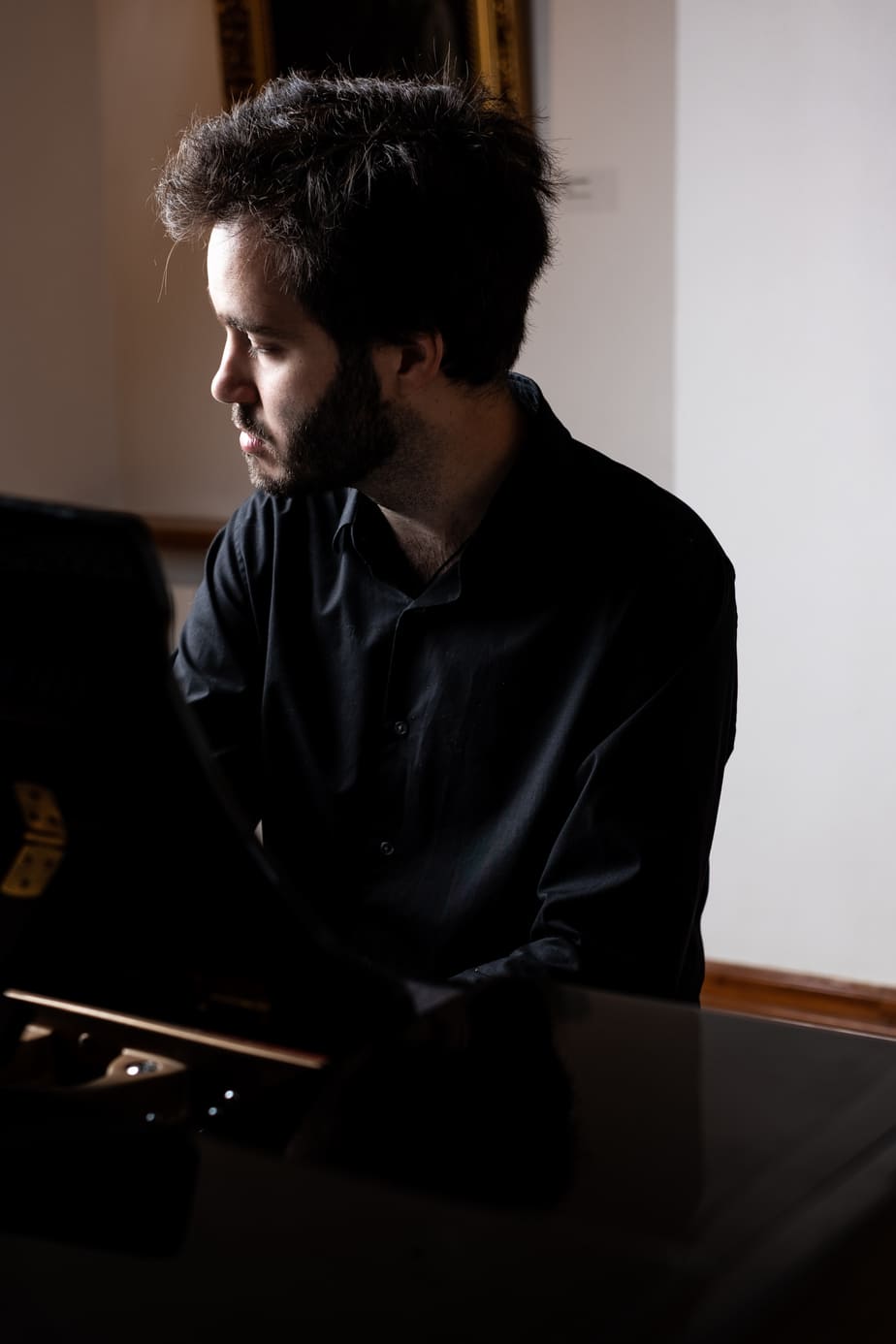
Pianist Antonii Baryshevskyi is the winner of the Arthur Rubinstein International Piano Master Competition and the Ferruccio Busoni International Piano Competition. A participant of renowned musical events, such as the Progetto Martha Argerich, the Klavier Ruhr Festival, and the Busoni Festival, he has performed at some of the world’s most prestigious venues, including the Wigmore Hall, the Konzerthaus Berlin, the Berliner Philharmonie, the Kölner Philharmonie, the Royal Concertgebouw, the Warsaw Philharmonic, and Teatro Comunale in Bologna. Concert tours have taken him to almost all European nations as well as Israel, Japan, South Korea, and the USA. In addition to his piano career, he explores contemporary music and improvisation and works as a sound artist. One of the most prolific Ukrainian pianists, he is combining his versatility with mastery and artistic invention.
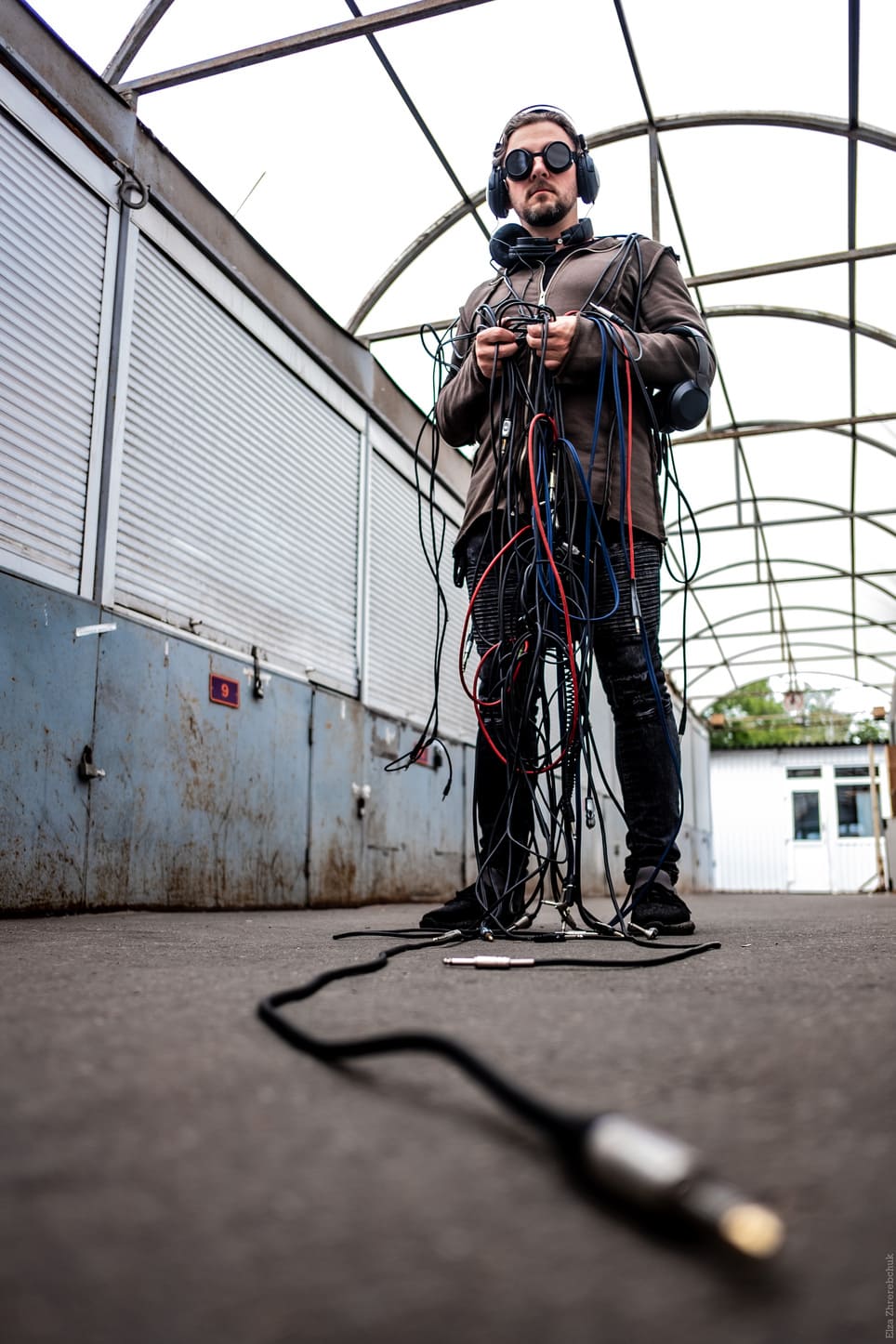
The composer, oboist, sound artist and improvisator, Maxim Kolomiiets had his pieces performed by some of the world’s leading ensembles and musicians including the Ensemble MusikFabrik, the Arditti Quartett, the Haydn Orchester, the Amaryllis Quartett, the Neo Quartet as well as Ian Pace and Hayk Melikyan. As an oboist, he took part in historically informed and contemporary performances together with the Freiburg Baroque Orchestra and the Ensemble Recherché and at several international festivals dedicated to new music, including these in Darmstadt and Graz.
In collaboration with the Ukho Ensemble, he played the Ukraine premiere of the Concert for oboe No. 2 by Luca Francesconi and ensemble pieces by Pierre Boulez, Stefano Gervasoni, Brian Ferneyhough, Luciano Berio and György Kurtág. He is a co-founder of the KoRa cube-shaped art space, one of Kyiv’s most exciting underground spaces for improvisation, artistic experiments and collaboration.
Beyond the Arctic Circle, in the Fleinvær archipelago in Norway, something happened that doesn’t occur so often in the real world. It was like a fairy tale. A fairy tale that everyone understands without words. The one that everyone has heard, and if you haven’t, you know it anyway. When it is told all listeners feel the same. While listening to it, the setting begins to transform, sometimes even the time of the day changes, but mostly it’s calm twilight. The sun is invisible but the sky is clear and there is just enough light around. The colours change very quickly, and if you close your eyes for a moment and then open them again, the picture around you won’t be the same. If you think you’ve spotted something in a wave, refrain from blinking, because it will be gone in no time, but you will see something else. In the distance, you can see mountains and clouds, mountain-clouds and cloud-mountains. They alternate each time the otter slides towards her cave. The air smells of a chocolate cake guarded by a Tibetan dog. He likes to listen to the tinkling of the incense sticks and the passing herons, but he doesn’t like much to be stared at. He then barks and when you blink, the colour of the cloud-mountains changes again. Then you observe for some time waiting for the gust of wind from the wings of the eagle to lift you into the air.
Performers:
Dominykas Digimas: sound, music
Lora Kmieliauskaitė: violin, voice, action
Kristijonas Dirsė: video installation

Dominykas Digimas is a composer whose work span a wide range of sound and musical practices. In addition to contemporary classical music, he also is active in the field of sound art and performing arts. His music is ascetic, concentrated and never overloaded. It is somewhat introvert as it encourages self-reflection and immerses the listener in subjective reflections.

Lora Kmieliauskaitė is a violinist and an active participant in various fields of music, as well as theatre and film. Her performance experience spans several genres, including classical, experimental, and contemporary music. She is a PhD student in Contemporary Music at the Lithuanian Academy of Music and Theatre. Her performances often include fusions of different media, movement, theatre, and new technologies. Lora is a member of the Twenty Fingers Duo, a contemporary music ensemble.

Audiovisual artist Kristijonas Dirsė combines music and sound art with visual expression in short films, documentaries and audiovisual installations. Music plays a major role in his storytelling and is particularly important in his collaboration with the composer Dominykas Digimas. Their recent work Why Does This Appear? explores the issue of subjectivity in our memories and the docu-fiction storytelling.

The Lithuanian Academy of Music and Theatre, together with ten partner organisations from the Nordic and Baltic countries, hosts Immedia, a course of the Nordplus initiative. The third edition of Immedia takes place April 21–30 in Vilnius.

The programme is for composers, sound designers and artists working with sound, visuals and media. They will work under the guidance of established professionals in the fields of electronic and electroacoustic composition, sound and video technology: Peter Baranov (Denmark), Daniel Biro (Norway), Palle Dahlstedt (Sweden), Samuli Homanen (Finland), Lauri Huikuri (Finland), Mantautas Krukauskas (Lithuania), Petri Kulju (Finland), Hans Gunter Lock (Estonia), Alejandro Olarte (Finland), Per Anders Nilsson (Sweden), Hans Peter Stubbe Teglbjaerg (Denmark), Jussi Tuohino (Finland), Anders Tveit (Norway). Their students will learn or enhance their knowledge in spatial audio and its merger with visuals. The results of their creative workshops are to be presented within a purpose-built sound and video installation at the Sodas 2123 Arts Centre.
This event is reserved for composers of electroacoustic music from the Nordic and Baltic countries who showcase their innovative work and the power of spatial audio in contemporary music.
The first such event ever to be held in Lithuania, the marathon is where technology meets and fuses with artistry in the most diverse forms as accomplished composers utilize state-of-the-art technology and techniques to craft advanced, intricate and highly individualized soundscapes enveloping the audience.
Held at a venue specifically calibrated for an exclusive aural experience, this show is designed to demonstrate the potential of spatial audio technology. Combining its power and complexity, the music surrounds the listener and creates a multidimensional acousomatic matrix that transcends traditional boundaries of a performance.
The programme is curated by the Music Innovation Studies Centre of the Lithuanian Academy of Music and Theatre and will take up to three hours. Listeners are free to enter or leave the venue at any time. The detailed programme is due 1 April.
Programme:
Hans Peter Stubbe Teglbjaerg (DK)
Spherical Fountain (fixed media, visuals)
Einike Leppik (EST)
Resurrection (fixed media, visuals)
Theodore Parker (Estonia)
Phenol-1 (fixed media)
Hans-Gunter Lock (EST)
Raumklangskizze (fixed media)
Petri Kulju, Jussi Tuohino (FI)
Audiovisual (fixed media, visuals)
Rikhardur Fridriksson (IS)
Mouth Music (fixed media)
Zane Dombrovska (LV)
New title (fixed media)
Voldemars Johansons (LV)
Hyperboreal (fixed media)
Rolands Kronlaks (LV)
Akusmatika (fixed media)
Covarnis & Resonant Digit (Mantautas Krukauskas, Roberto Becerra) (LT)
Nakties saulės kalba (live performance, visuals)
Tine Surel Lange (NO)
Works for listening (fixed media, visuals)
Anders Tveit (NO)
Jo-Ha-Kyu and RadialFiction (fixed media)
Palle Dahlstedt (SE)
Dragonomalies (live performance, visuals)
Tom Williams (GB)
Weighed Down by Light (fixed media, visuals)

Photo credits: Jonas Šopa

Photo credits: Matthias Kronlachner



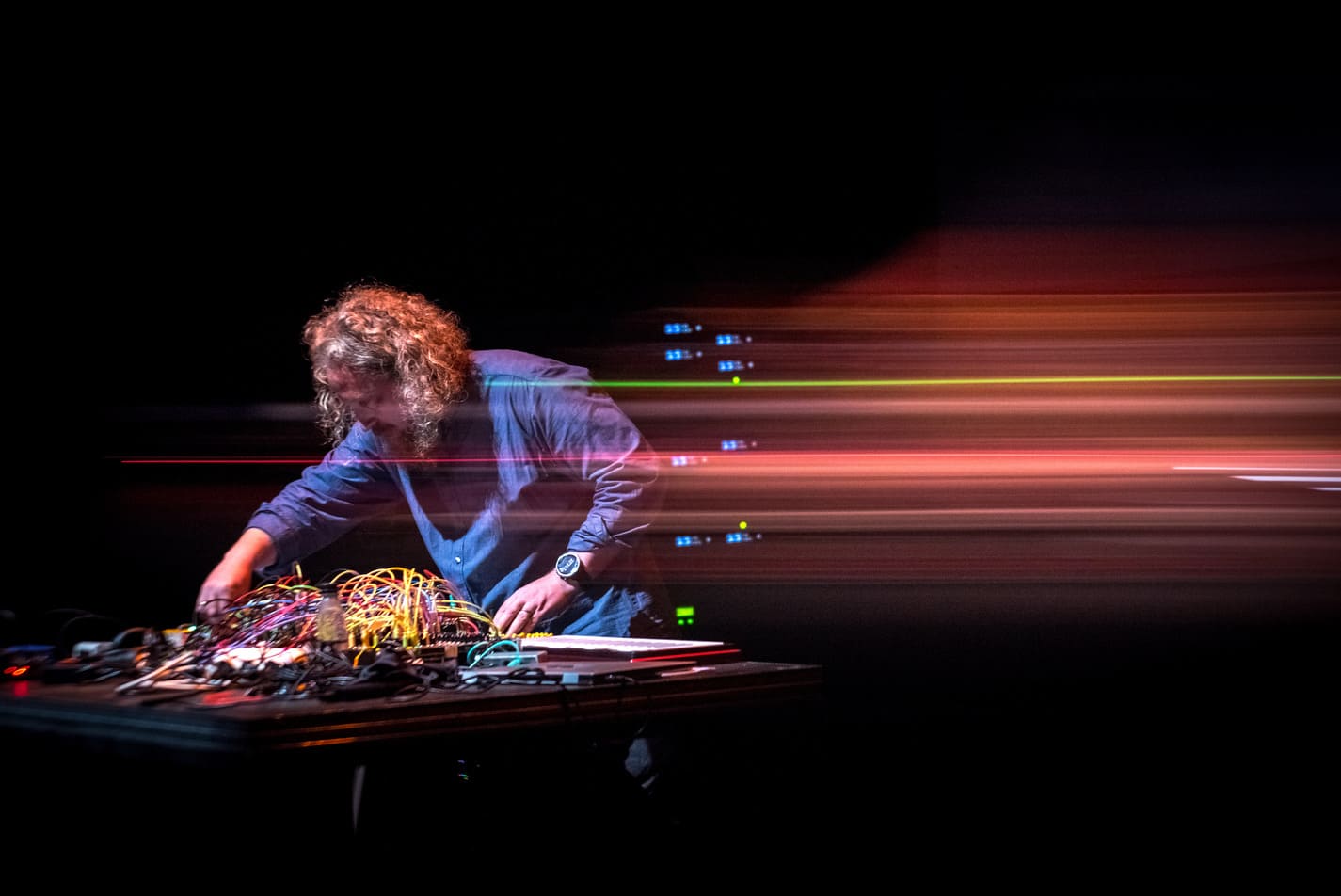
.jpg)
.jpg)
.jpg)
.jpg)
.jpg)
.jpg)
.jpg)
.jpg)
.jpg)
.jpg)
.jpg)
.jpg)
.jpg)
.jpg)
.jpg)
.jpg)
